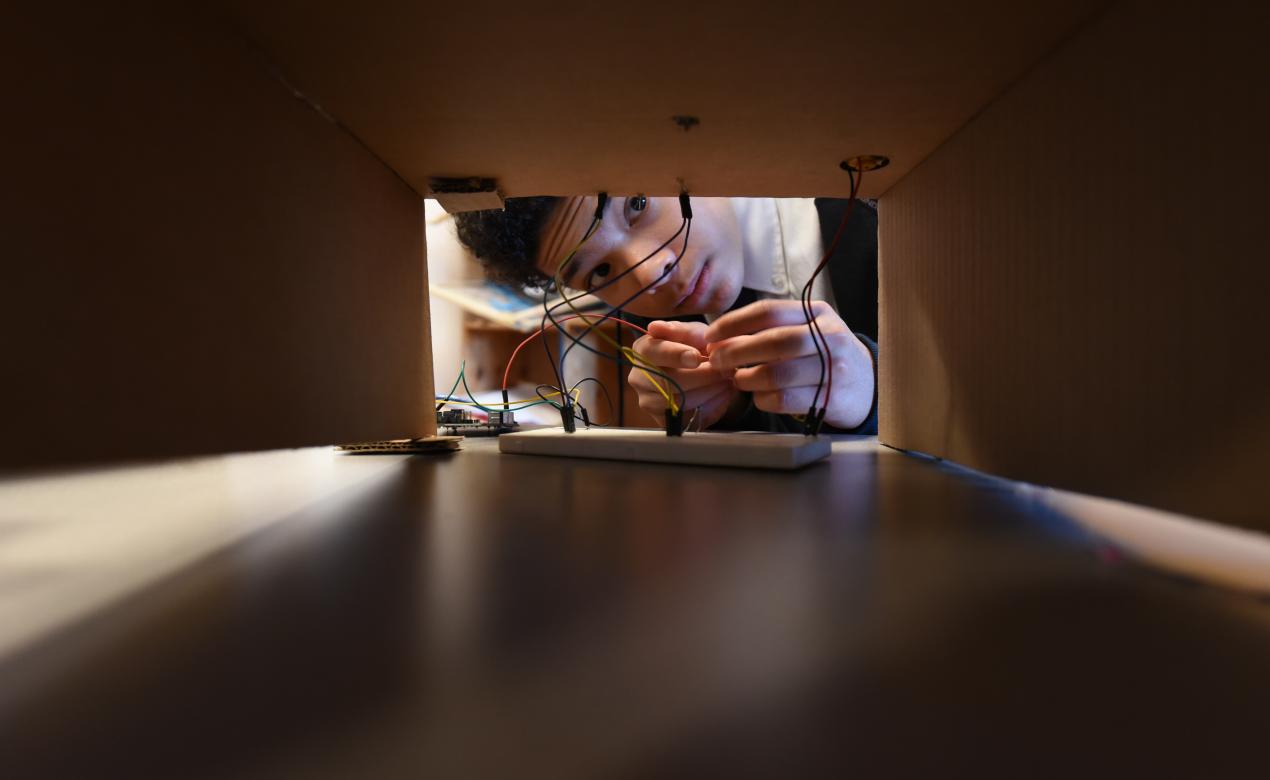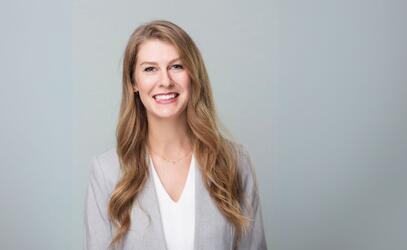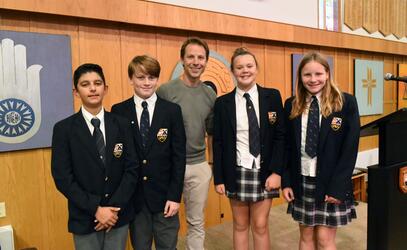
Every day I get a front-row seat in my class watching the frustration on students’ faces transition to pure elation as they find solutions to problems they have struggled with for 20 minutes. It’s rewarding to see them push through a challenge and come out the other side feeling proud of their work and of what they learned.
This is what it’s like every day in the Grade 9 Applied Design, Skills and Technology (ADST) course.
In the course this year, students have designed and built a pachinko machine (think pinball, without the flippers) using a vector graphics software and a laser cutter. Then, they put their newfound circuitry and coding skills to use by integrating an Arduino microcontroller and programming electronic components that interact with the ball – making lights turn on, keeping score and making noises. Hard? Yes. Fun? Absolutely.
ADST might look different at every school and includes many options that you might remember such as cooking, drafting and woodworking. When I took cooking and sewing as part of my home economic rotation in high school, it was about getting hands-on experience in unfamiliar territory. That’s still the same in ADST. What’s changed is the shift to prioritize the development of competencies: a combination of skills, processes, behaviours, and habits of mind. For example, in cooking class you may have needed to follow a cake recipe and then were graded based on its appearance or, if your teacher was brave enough, the taste. Instead, an ADST cooking class today would likely have you invent your own cake recipe by researching ingredients, creating a draft recipe, and testing it.
That’s not to say the end product isn’t important, but it is more likely that the skills developed by going through the process itself will be more relevant in preparing students for life.
For Grade 9 SMUS students, ADST is about getting an opportunity to apply their knowledge of digital design and coding to solve complex problems where there are no right answers. Asking students to create projects where there isn’t a right answer is key to developing and honing those competencies in a school setting.
While these Grade 9 students are gaining hard skills such as coding, designing, and programming, those skills are secondary. This intentionally designed ADST course is simply the vehicle for students to develop important soft skills. The pachinko project prioritizes resilience, one of seven qualities that SMUS has identified as characteristics we want all students to possess.
Portrait of a Learner
In 2018, the school’s Personalization Team, made up of teachers from all three schools and headed by Director of Academics Denise Lamarche, launched the Portrait of a Learner practice. This work brought to light the seven skills that we want all students to develop that will benefit them now and after graduation: curiosity, resilience, initiative, balance, integrity, collaboration, and empathy.
“If you look at where careers are heading, there is a need for more than just what you know. It’s how you are able to work on a team, and how you’re able to communicate and collaborate effectively for ultimate success,” Denise says.
Faculty across all grades balance academic rigour with skill development by planning lessons and schoolwork around both what students need to know and how they can demonstrate their understanding by applying knowledge to an inquiry question or real-world problem. Intentional thought goes into giving students experiential learning opportunities that help develop these seven skills in age-appropriate ways.
“That’s what I think makes learning exciting today. Any time we have student demonstrations of learning, it highlights the depth of what the students know but also how they arrived at sharing what they know. No longer are projects all the same,” Denise says. “Now what you’re seeing is students bringing in some passion and bringing in other connections, and deciding that this is how they’re going to present their information. There are many different ways to answer a question or solve a problem, and students can tailor that experience to themselves.”
Since the Portrait of a Learner launched, Denise says she has seen students develop and demonstrate these skills in very noticeable ways.
“Resilience has had to come out in spades as students and teachers navigated the impact of COVID-19 with remote learning, timetable changes, cohort restrictions and more. I think about how our community has navigated all of that and the success that we’ve seen in the classroom and through many different demonstrations of learning, and I think that everyone has done an extraordinary job,” she says.
Later this year, the school will begin to undertake a process to articulate the Portrait of a Graduate, which will highlight the experiences we want all SMUS grads to have embedded in their learning journey – from public speaking to outdoor education to leadership opportunities.
Portrait in Practice
While ADST was previously integrated into experiences throughout the Grade 9 year, the 2020-21 schedule changes allowed for the introduction of the ADST course into the timetable.
When designing any course or any project, one philosophy is to start at the end. As teachers we ask: what do we want students to know, do, and understand by the end?; How are students going to demonstrate this learning?; And how am I going to assess it? By answering these questions, we can identify the skills students will need to be successful and structure the course or project accordingly.
ADST lends itself well to project-based work as it provides the ideal setting for students to demonstrate their skills, while engaging them in the hard-fun experience we are after.
Rather than assessing Grade 9 ADST students solely based on the end product, we are looking for students to be able to use the design cycle to inform the creation and development of their projects. It is an iterative process that involves defining a problem, researching and brainstorming ideas, building a prototype, and then testing it. The process then repeats based on the results of the testing phase. When are we done? Never! Although there are no right answers, we can always make improvements. We can always be better.
It is this attitude and approach to life, along with the Portrait of a Learner skills, we hope students walk away with.


